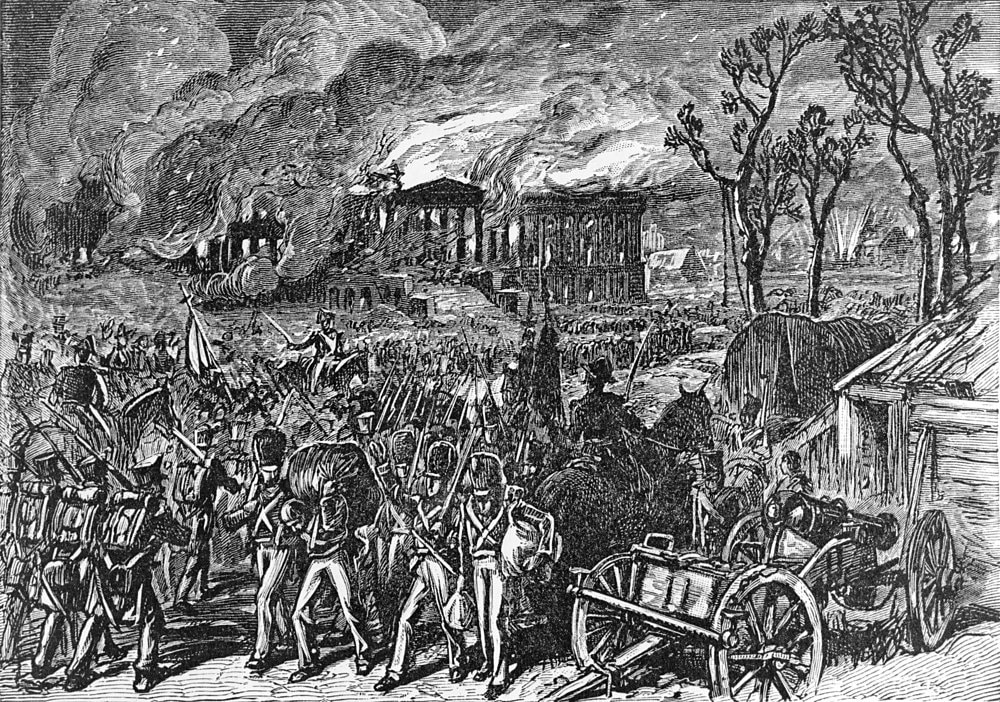The Battle of Bladensburg is known as "the greatest disgrace ever dealt to American arms" and would be the last time an American capital was captured.
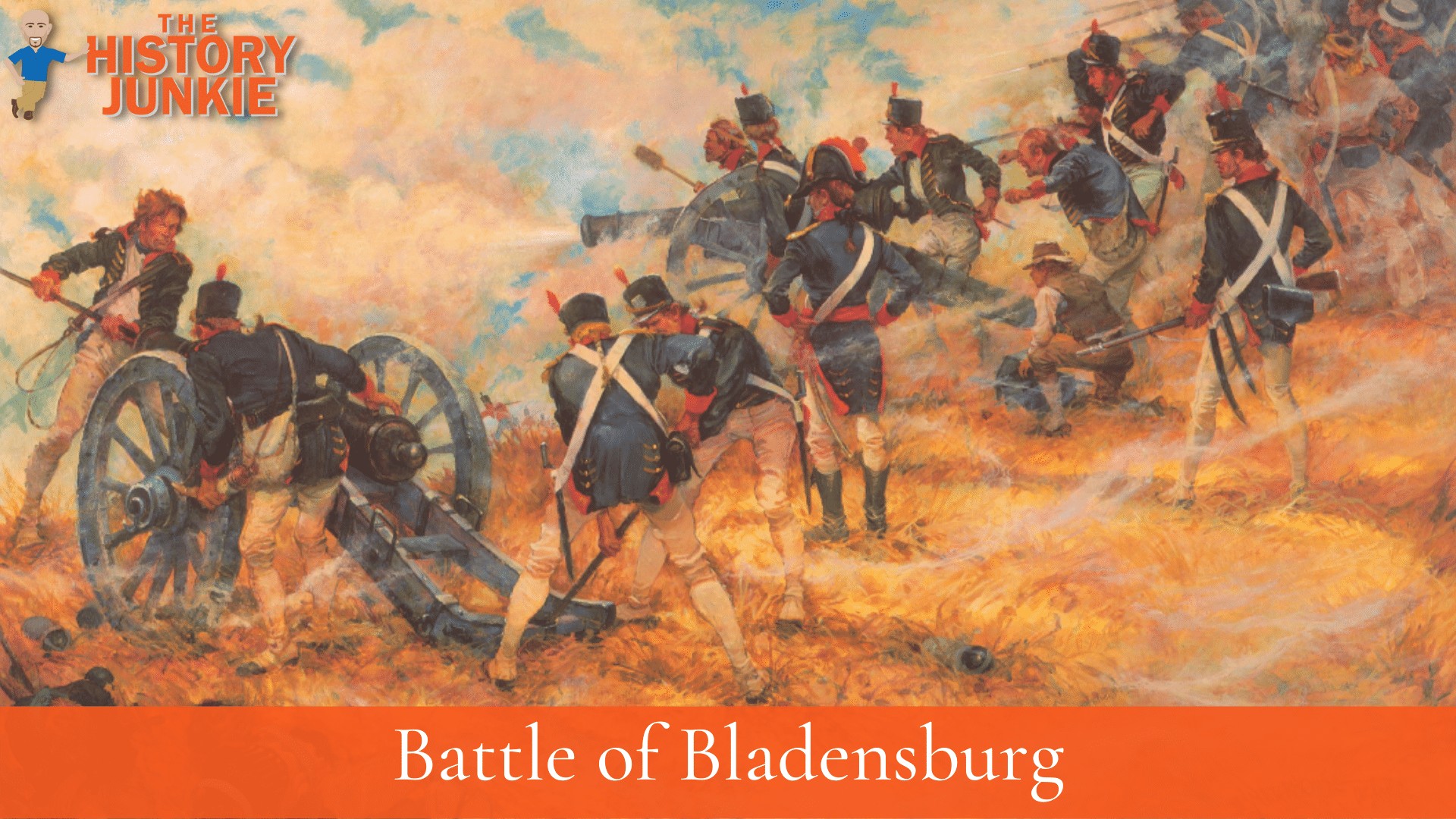
A British force of army regulars and Royal Marines routed a combined U.S. force of Regular Army and state militia troops.
The American defeat resulted in the capture and burning of Washington, the only time since General William Howe won the Battle of Brandywine and took control of Philadelphia during the American Revolution when an American capital had fallen into enemy hands.
Prelude
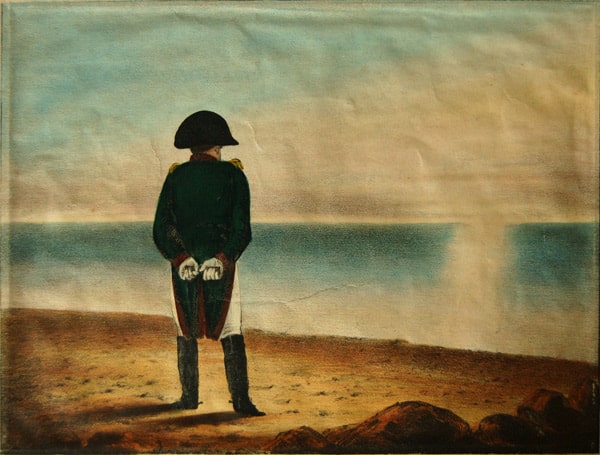
By April 1814, Napoleon had been defeated in Europe and was exiled to the island of Elba. Large numbers of British troops were free to be sent to North America. Sir George Prevost, Governor General of Canada, planned for a dual invasion of the United States.
He personally led one invasion into New York from his headquarters in Canada, headed for Lake Champlain.
Meanwhile, a brigade under Major General Robert Ross, consisting entirely of veterans of the army of the Duke of Wellington, was transported to the Chesapeake Bay to "effect a diversion on the coasts of the United States of America in favor of the army employed in the defense of Upper and Lower Canada."
Prevost had urged Vice Admiral Alexander Cochrane, the commander in chief of the Royal Navy's ships on the American Station, to avenge the Raid on Port Dover on the north shore of Lake Erie earlier in the year, in which the settlement had been set ablaze by American troops.
Cochrane had issued a proclamation that American property was forfeit; only the lives of the civilian inhabitants were to be spared.
He had issued a private memorandum to his captains, however, which allowed them to levy what was effective protection money in return for sparing buildings.
In practice, there was little or no looting or wanton destruction of property by Ross's troops or Cochrane's sailors.
Although Ross commanded the troops, the point of attack was to be decided by Vice Admiral Cochrane.
When Cochrane's whole fleet was concentrated at Tangier Island, it numbered four ships of the line and twenty frigates and sloops of war, in addition to the twenty means of transport carrying Ross's troops.
Cochrane and his active second in command, Rear Admiral George Cockburn, were in favor of a quick attack on Washington, although Ross was not so eager.
His troops had been confined aboard their transports for nearly three months; he lacked cavalry, artillery, and transport, and he was wary of the American Chesapeake Bay Flotilla lurking in the Patuxent River.
He was overruled by the Admirals.
In Washington, the United States Secretary of War, John Armstrong, did not believe the British would attack the strategically unimportant city of Washington.
He instead believed the likely target would be the militarily more important city of Baltimore.
Armstrong was only half right; the British invasion was aimed at both Baltimore and Washington.
British Perspective
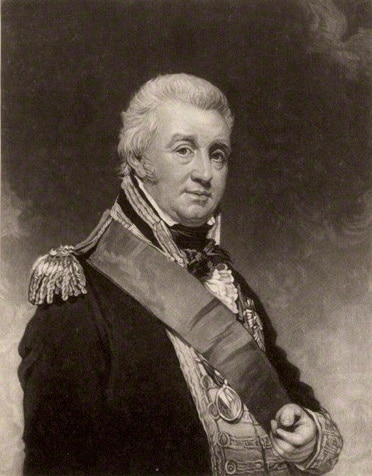
Cochrane dispatched two forces to make diversions. The frigate HMS Menelaus and some small craft threatened a raid on Baltimore, while two frigates, some bomb ketches, and a rocket vessel ascended the Potomac River, an expedition that resulted in the successful Raid on Alexandria.
His main body proceeded into the Patuxent. Ross's troops began landing at Benedict on 19 August and began marching upstream the following day, while Cockburn proceeded up the river with ship's boats and small craft.
By 21 August, Ross had reached Nottingham, and Commodore Joshua Barney was forced to destroy the gunboats and other sailing craft of the Chesapeake Bay Flotilla the next day and retreat overland towards Washington with some of his vessels' guns.
From Nottingham, Ross continued up the Patuxent to Upper Marlboro, from where he could threaten to advance on either Washington or Baltimore, confusing the Americans.
On the night of 22 August, he decided to attack Washington. He might have taken the capital almost unopposed had he advanced during the following morning, but instead, he rested his men and organized his force.
He had four infantry battalions: a battalion of Royal Marines, a company of a Corps of Colonial Marines locally recruited from black refugees from slavery, a rocket brigade of the Royal Artillery and a rocket detachment of the Royal Marine Artillery, 50 Royal Sappers and Miners, 100 gunners from the Navy and 275 sailors to carry supplies.
His force totaled 4,370 men, with one 6-pounder gun, two 3-pounder guns, and sixty rocket-launching frames. Rear Admiral Cockburn accompanied his force.
Ross had a choice of two routes by which he could advance: from the south via Woodyard or from the east via Bladensburg.
The former route would involve finding a way across an unfordable part of the Eastern Branch of the Potomac (now called the Anacostia River) if the Americans destroyed the bridge.
In the afternoon of 23 August, Ross made a feint on the southern route before suddenly swerving northwards towards Bladensburg.
American Perspective
The area around Washington and Baltimore was designated by the United States Army on 2 July as the Tenth Military District.
Its commander was Brigadier General William H. Winder, an inept leader who had been recently exchanged after being captured at the Battle of Stoney Creek in July 1813.
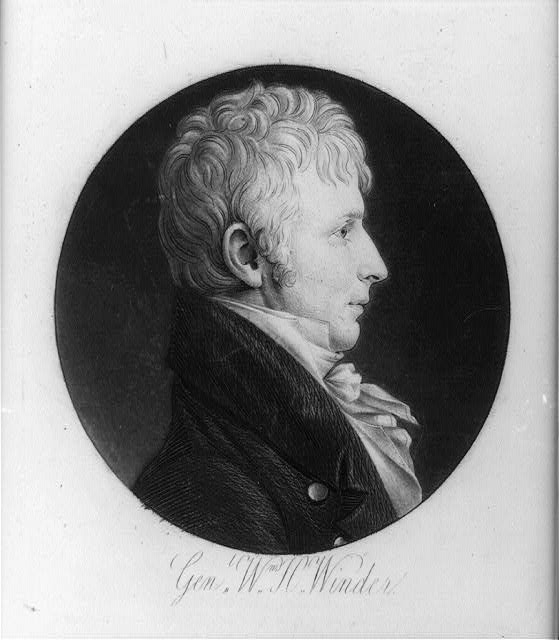
In total, Winder could theoretically call upon 15,000 militia, but he actually had only 120 Dragoons, 300 other Regulars, and 1,500 poorly trained and equipped militia at his immediate disposal.
On 20 August, he ordered his force to advance south to the vicinity of Long Old Fields and Woodyard, off modern Route 5, to confront the British at Upper Marlboro.
There was a brief clash with Ross's leading troops on 22 August, and Winder ordered a hasty retreat to the Long Old Fields.
Though Winder rode with the force directly challenging the British, he realized that Bladensburg was the key to the defense of Washington.
Bladensburg commanded the roads to Baltimore and Annapolis, upon which reinforcements were already moving. It also lay on one of the only two routes available to the British for an advance on Washington, the preferable route, as it happened, because the Eastern Branch was easily forded there.
On 20 August, Winder had ordered Brigadier General Tobias Stansbury to move from Baltimore to Bladensburg. Stansbury was ordered to "take the best position in advance of Bladensburg...and should he be attacked, to resist as long as possible."
Stansbury's force consisted of the 1st (Ragan's), 2nd (Schutz's), and 5th (Sterrett's) regiments of Maryland Militia, Pickney's three companies of volunteer riflemen, and two companies of Baltimore artillery, with six guns.
Ragan's and Schutz's regiments were hastily drafted amalgamations of companies without uniforms. Sterrett's 5th Maryland Regiment was a "Dandy" regiment of uniformed volunteers.
On 22 August, Stansbury deployed his force on top of Lowndes Hill, just east of town. The road from Annapolis ran across the hill; the road from Upper Marlboro ran to its right and rear.
The roads to Washington, Georgetown, and Baltimore intersected behind it. From this position, Stansbury dominated the approaches available to the British while controlling all lines of communication.
At 2:30 a.m. on 23 August, Stansbury received a message from Winder, announcing that he had withdrawn across the Eastern Branch and that he intended to fire the lower bridge.
Surprised, Stansbury was seized by an irrational fear that his right would be turned. Rather than further strengthen an already commanding position, he immediately decamped and marched his exhausted troops back across Bladensburg bridge, which he did not burn, to a brickyard 1.5 miles further on.
In so doing, he had thrown away almost every tactical advantage available to him.
The Fight
Stansbury chose a defensible position, but not the best position, on the western side of the Eastern Branch of the Potomac, across from the town of Bladensburg.
The Baltimore artillery was posted in an earthwork that had been hastily constructed by Colonel Decius Wadsworth (the Commissary General of Ordnance) to the north of the bridge.
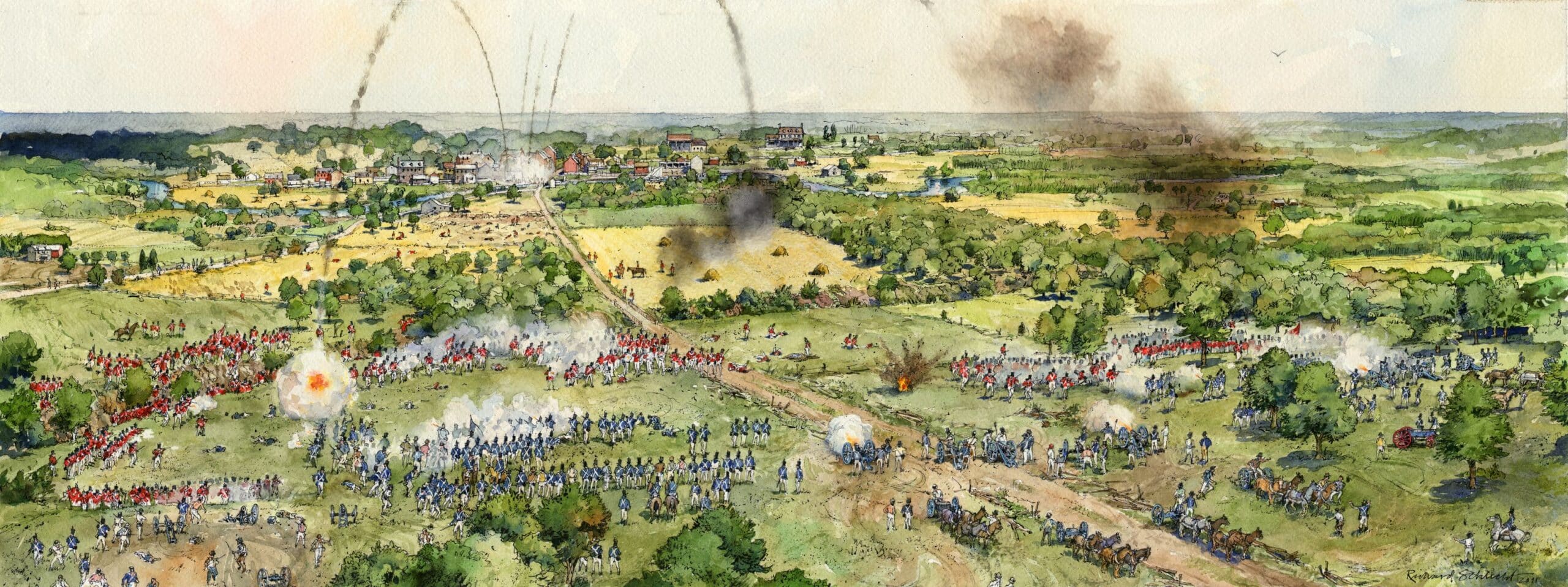
The earthwork was intended for larger weapons, and with its restricted fields of fire, the artillery could not prevent the bridge from being seized with oblique fire.
Behind Stansbury's troops was a brigade of militia under Brigadier General Walter Smith of the District of Columbia militia, which had marched up from Long Old Fields to the south.
Smith had not conferred with Stansbury before deploying his brigade, so there was a gap of a mile between them, and Smith's men could not support Stansbury. Posted with Smith's brigade were Joshua Barney's men, with two 18-pounder guns and three 12-pounder guns.
Behind Smith's brigade, in turn, was a column under Colonel William Beall, which had just arrived from Annapolis and which included a company of six 6-pounder guns under Captain George Peter and a provisional battalion of regulars.
Stansbury's troops were tired from two days' constant alarms and redeployments, and Smith's and Beall's men were equally exhausted from having force-marched to the battlefield through a hot and humid summer day, with many diversions and unnecessary panics.
Both Winder and United States Secretary of State James Monroe tinkered with Stansbury's dispositions, moving companies and detachments about without correcting the major faults of his position.
Around noon on 24 August, Ross's army reached Bladensburg. Stansbury's tactical errors quickly became apparent. Had he held Lowndes Hill, Stansbury could have made the British approach a costly one.
Had he held the brick structures of Bladensburg, ready-made mini-fortresses, he might have embroiled Ross's troops in bloody street fighting. Because the bridge had not been burned, it had to be defended.
Stansbury's infantry and artillery were posted too far from the river's edge to contest a crossing effectively.
The British advance was led by Colonel William Thornton's 85th Light Infantry and the three light companies of the other line battalions.
Although the Baltimore artillery stopped Thornton's first rush across the bridge, they had solid shot only, useless against scattered skirmishers.
Pickney's riflemen, posted to protect the American guns, were driven back, and as Thornton's men closed in, the Baltimore artillerymen retreated with five of their cannons, being forced to spike and abandon another.
As the British 1/44th Regiment prepared to envelop the American left, Winder led a counter-attack by Sterrett's 5th Maryland militia, joined by other detachments.
As the 5th Maryland exchanged fire with British infantry in cover on three sides, Schutz's and Ragan's drafted militia regiments broke and fled under a barrage of Congreve rockets.
Winder issued confused orders for three guns under an officer named Burch to fall back rather than cover Sterrett's retreat, and the 5th Maryland and the rest of Stansbury's brigade fled the field.
The British pressed on and were engaged by Smith's brigade and Barney's and Peters's guns. Thornton was badly wounded, and his light infantry was driven back with heavy casualties, but as the 1/44th threatened Smith's left flank, Winder ordered Smith to retreat also.
Winder's orders to retreat apparently did not reach Barney, and Barney's 400 sailors and Marines were overwhelmed in hand-to-hand fighting against the British ¼th and 1/44th Regiments.
Barney was badly wounded with a musket ball in the thigh. Beall's troops were also driven from the hill they held after an ineffectual resistance.
Winder had failed to give any instructions before the battle in the case of a retreat, and as the American militia left the battlefield, he issued contradictory orders to stand, fall back on the Capitol, or retreat through Georgetown to Tenleytown.
Most of the militia simply fled the field with no destination in mind or deserted the ranks to rejoin their families.
Aftermath
The hasty and disorganized American retreat led to the battle becoming known as the Bladensburg Races from an 1816 poem.
Although the British had suffered heavier casualties than the Americans (many inflicted by Barney's guns), they had completely routed the defenders.
The British casualties were 64 dead and 185 wounded. Some of the British dead "died without sustaining a scratch. They collapsed from heat exhaustion and the strain of punishing forced marches over the five days since landing at Benedict".
Heidler's Encyclopedia of the War of 1812 gives the American loss as "10 or 12 killed, 40 wounded" and "about 100" captured.
Henry Adams and John S. Williams both gave the American casualties as 26 killed and 51 wounded. Joseph A. Whitehorne says that the Americans lost "120 taken prisoner, many of these wounded".
Ten cannons were captured by the British.
The battle was termed "the greatest disgrace ever dealt to American arms" and "the most humiliating episode in American history."
The American militia actually fled through the streets of Washington. President Madison and most of the rest of the federal government had been present at the battle and had nearly been captured.
They, too, fled the capital and scattered through Maryland and Virginia.
Thanks to the efforts of the President's wife, Dolley Madison, several historic paintings and other artifacts were saved from the White House.
That same night, the British entered Washington unopposed.
